Serves the Iranians right.when the yanks shot down an Iranian air liner despite heaps of warnings the Iranians kpkb till no end. Now they get their just desserts for they shot an airline down without warning. So who the aggressors here?
Iran Air Flight 655 - Wikipedia
Iran Air Flight 655 was a scheduled passenger flight from
Tehran to
Dubai via
Bandar Abbas that was shot down on 3 July 1988 by an
SM-2MR surface-to-air missile fired from
USS Vincennes, a
guided-missile cruiser of the
United States Navy. The aircraft, an
Airbus A300, was destroyed and all 290 people on board were killed.
[1] The jet was hit while flying over
Iran's
territorial waters in the
Persian Gulf, along the flight's usual route, shortly after departing
Bandar Abbas International Airport, the flight's stopover location. The incident occurred during the final stages of the
Iran–Iraq War, which had been ongoing for nearly eight years.
Vincennes had entered Iranian territory after one of its helicopters drew warning fire from Iranian speedboats operating within Iranian territorial limits.
[2][3][4][5][6][7]
Iran Air Flight 655
The reason for the shootdown has been disputed between the governments of the two countries. According to the United States government, the crew of USS
Vincennes had incorrectly identified the Airbus as an attacking
F-14 Tomcat, a U.S.-made
jet fighter that had been part of the
Iranian Air Force inventory since the 1970s. While the F-14s had been supplied to Iran in an air-to-air configuration,
[8][9] the crew of the guided missile cruiser had been briefed that the Iranian F-14s were equipped with
air-to-ground ordnance.
[10] Vincennes had made ten attempts to contact the aircraft on both military and civilian radio frequencies, but had received no response.
[11] According to the Iranian government, the cruiser negligently shot down the aircraft, which was transmitting
IFF squawks in Mode III, a signal that identified it as a civilian aircraft, and not Mode II as used by Iranian military aircraft.
[12][13] The event generated a great deal of criticism of the United States. Some analysts blamed the captain of
Vincennes,
William C. Rogers III, for overly aggressive behavior in a tense and dangerous environment.
[11][14] In the days immediately following the incident, US President
Ronald Reagan issued a written diplomatic note to the Iranian government, expressing deep regret.
[15] However, the United States continued to insist that the Vincennes was acting in self-defense in international waters.
In 1996, the governments of the United States and Iran reached a settlement at the
International Court of Justice which included the statement "...the United States recognized the aerial incident of 3 July 1988 as a terrible human tragedy and expressed deep regret over the loss of lives caused by the incident..."
[16] As part of the settlement, even though the U.S. government did not admit legal liability or formally apologize to Iran, it still agreed to pay
US$61.8 million on an
ex gratia basis in compensation to the families of the Iranian victims.
[17] The shootdown was the deadliest aviation disaster involving an
Airbus A300.
[18][19][20]
Background
USS Vincennes had been deployed to the Persian Gulf at short notice to compensate for the lack of
AWACS cover
In 1984, the
war between Iraq and Iran had expanded to include air attacks against oil tankers and merchant shipping of neighboring countries, some of whom were providing aid to Iraq by shipping Iraqi oil. The Flight 655 incident occurred a year after the
Iraqi Air Force attack on the U.S. Navy guided-missile
frigate USS Stark on 17 May 1987, which killed 37 American sailors. U.S. naval forces had also exchanged gunfire with Iranian gunboats in late 1987, and the U.S. Navy guided-missile frigate
USS Samuel B. Roberts had struck an Iranian
sea mine in April 1988. Two months before the incident, the U.S. had engaged in
Operation Praying Mantis, resulting in the sinking of the
Iranian frigate Sahand. Tensions were therefore high in the
Strait of Hormuz at the time of the incident with Flight 655.
In response to the pattern of attacks on shipping, the U.S.
Joint Chiefs of Staff issued a
NOTAM on 8 September 1987 warning all Persian Gulf countries that civilian aircraft must monitor the 121.5 MHz VHF
International Air Distress or the 243.0 MHz UHF Military Air Distress frequencies and be prepared to identify themselves to U.S. Navy ships and state their intentions.
[21]
On 29 April 1988, the U.S. expanded the scope of its navy's protection to all friendly neutral shipping in the
Persian Gulf outside declared exclusion zones, which set the stage for the shootdown.
[2] At about the same time,
Ticonderoga-class cruiser USS Vincennes was rushed to the area on a short-notice deployment, as a result of high-level decisions, to compensate for the lack of
AWACS coverage, which was hampering U.S. monitoring of the southern Persian Gulf.
Vincennes, fitted with the then-new
Aegis Combat System and under the command of Captain
William C. Rogers III,
[2] departed
San Diego on 25 April 1988 and arrived in
Bahrain on 29 May 1988.
As the Strait of Hormuz at its narrowest is 21 nautical miles (39 km) wide,
[22] in order to traverse the strait, ships must stay within sea lanes that pass through the
territorial waters of Iran and
Oman under the
transit passage provisions of customary
Law of the Sea.
[23] It is therefore normal for ships, including warships, entering or leaving the Persian Gulf to transit Iranian territorial waters. During the
Iran–Iraq War the Iranian forces frequently boarded and inspected neutral cargo ships in the Strait of Hormuz in search of
contraband destined for Iraq. While legal under international law, these inspections added to the tensions in the area.
[2]
Shootdown of Flight 655
Locater map depicting Iran Air 655's origination point, destination and approximate shootdown location. (Air corridor not necessarily a direct path.)
The plane, an
Airbus A300 (
registered as EP-IBU), flown by 37-year-old Captain Mohsen Rezaian, a veteran pilot with 7,000 hours of flight time, left Bandar Abbas at 10:17
Iran time (
UTC+03:30), 27 minutes after its scheduled departure time. It should have been a 28-minute flight. After takeoff, it was directed by the
Bandar Abbas tower to turn on its
transponder and proceed over the
Persian Gulf. The flight was assigned routinely to commercial
air corridor Amber 59, a 20-mile (32 km)-wide lane on a direct line to Dubai airport. The short distance made for a simple flight pattern: climb to 14,000 feet (4,300 m), cruise, and descend into
Dubai. The airliner was transmitting the correct transponder
"squawk" code typical of a civilian aircraft and maintained radio contact in English with appropriate air traffic control facilities.
Aegis screen displays in the
combat information center on board
Vincennes
On the morning of 3 July 1988, USS
Vincennes was passing through the
Strait of Hormuz returning from an escort duty.
[2] A helicopter deployed from the cruiser reportedly received small arms fire from Iranian patrol vessels as it observed from high altitude.
Vincennes moved to engage the Iranian vessels, in the course of which they all violated Omani waters and left after being challenged and ordered to leave by a
Royal Navy of Oman warship.
[24] Vincennes then pursued the Iranian
gunboats, entering Iranian
territorial waters to open fire. Two other US Navy ships,
USS Sides and
USS Elmer Montgomery, were nearby. Thus,
Vincennes was in Iranian territorial waters at the time of the incident, as admitted by the U.S. government in legal briefs and publicly by
Chairman of the Joint Chiefs of Staff, Admiral
William J. Crowe, on
Nightline.
[25][26] Admiral Crowe denied a U.S. government coverup of the incident and claimed that the cruiser's helicopter was over international waters initially, when the gunboats first fired upon it.
[25][27]
Contrary to the accounts of various
Vincennes crew members, the cruiser's Aegis Combat System recorded that the airliner was climbing at the time and its radio transmitter was
squawking on only the Mode III civilian frequency, and not on the military Mode II.
[28]
Flight 655 was first detected by the
Vincennes immediately after takeoff when it received a short
IFF Mode II, possibly leading the crew of the Vincennes to believe that the airliner was an Iranian F-14 Tomcat (capable of carrying unguided bombs since 1985
[29]) diving into an attack profile. Since the
USS Stark incident, all aircraft in the area had to monitor 121.5 Mhz, the International Air Distress (IAD) radio frequency. A total of 10 attempts were made to warn the airliner, seven on the Military Air Distress (MAD) frequency, and three on the IAD frequency. There were no responses.
[18]
At 10:24:22, after receiving no response to multiple radio challenges,
Vincennes fired two
SM-2MR surface-to-air missiles, one of which hit the airliner at 10:24:43.
[30] The plane disintegrated immediately and crashed into the water soon after. None of the 290 passengers and crew on board survived.
[30] The cockpit voice recorder and flight data recorder were never found.
[31]
Nationalities of the victims
According to the documents that Iran submitted to the
International Court of Justice, the aircraft was carrying 290 people: 274 passengers and a crew of 16. Of these 290, 254 were
Iranian, 13 were
Emiratis, 10 were
Indians, six were
Pakistanis, six were
Yugoslavs and one was an
Italian.
[32]
| Nationality | Passengers | Crew | Total |
|---|
| Iran | 238 | 16 | 254 |
| United Arab Emirates | 13 | 0 | 13 |
| India | 10 | 0 | 10 |
| Pakistan | 6 | 0 | 6 |
| Yugoslavia | 6 | 0 | 6 |
| Italy | 1 | 0 | 1 |
| Total | 274 | 16 | 290 |
U.S. government accounts
A missile departs the forward launcher of
Vincennes during a 1987 exercise. The same launcher was used in Flight 655's downing.
In the first hours after the shootdown the Pentagon denied the accusations from Iran that the US Navy had shot down the plane.
[33] According to the U.S. government, USS
Vincennes mistakenly identified the airliner as an attacking military fighter and misidentified its flight profile as being similar to that of an
F-14A Tomcat during an attack run; however, the cruiser's Aegis Combat System recorded the plane's flight plan as climbing (not descending as in an attack run) at the time of the incident.
[28] The flight had originated at
Bandar Abbas, which served as both a base for Iranian F-14 operations and as a hub for commercial civilian flights.
[14] According to the same reports,
Vincennes unsuccessfully tried to contact the approaching aircraft, seven times on the military
emergency frequency and three times on the civilian emergency frequency. This civilian aircraft was not equipped to pick up military frequencies and the messages on the civilian emergency channel could have been directed at any aircraft. More confusion arose as the hailed speed was the
ground speed, while the pilot's instruments displayed
airspeed, a 50-knot (93 km/h) difference.
[34]
This was finalized in a report by Admiral William Fogarty, entitled
Formal Investigation into the Circumstances Surrounding the Downing of Iran Air Flight 655 on 3 July 1988 (the "Fogarty report").
[10] Only parts of this report have been released (part I in 1988 and part II in 1993). The Fogarty report stated, "The data from USS
Vincennes tapes, information from USS
Sides and reliable intelligence information, corroborate the fact that [Iran Air Flight 655] was on a normal commercial air flight plan profile, in the assigned airway, squawking Mode III 6760, on a continuous ascent in altitude from take-off at Bandar Abbas to shoot-down".
The Fogarty report also stated, "Iran must share the responsibility for the tragedy by hazarding one of their civilian airliners by allowing it to fly a relatively low altitude air route in close proximity to hostilities that had been ongoing".
[10]
When questioned in a 2000
BBC documentary, the U.S. government stated in a written answer that they believed the incident may have been caused by a simultaneous psychological condition amongst the eighteen bridge crew of
Vincennes, called "scenario fulfillment", which is said to occur when persons are under pressure. In such a situation, the men will carry out a training scenario, believing it to be reality while ignoring sensory information that contradicts the scenario. In the case of this incident, the scenario was an attack by a lone military aircraft.
[35]
Iranian government account
According to the Iranian government, the shootdown was an intentionally performed and unlawful act. Even if there was a mistaken identification, which Iran never accepted, it argues that this constituted negligence and recklessness amounting to an international crime, not an accident.
[36](§4.52–4.54)
In particular, Iran expressed skepticism about claims of misidentification, noting that the cruiser's advanced Aegis radar correctly tracked the flight and its Mode III beacon; two other U.S. warships in the area,
Sides and
Montgomery, also identified the aircraft as civilian; and the flight was well within a recognized international air corridor. It also noted that the crew of
Vincennes were trained to handle simultaneous attacks by hundreds of enemy aircraft.
[36](§4.50) Iran found it more plausible that
Vincennes "hankered for an opportunity to show its stuff".
[36](§4.52)
According to Iran, the U.S. had previously issued a
Notice to Airmen (
NOTAM) warning aircraft that they were at risk of "defensive measures" if they had not been cleared from a regional airport and if they came within 5 nautical miles (9.3 km) of a warship at an altitude of less than 2,000 feet (610 m). Flight 655 had been cleared from a regional airport and was well outside those limits when it was attacked.
[36](§4.62) Even if the plane had truly been an Iranian F-14, Iran argued that the U.S. would not have had the right to shoot it down, as it was flying within Iranian airspace and did not follow a path that could be considered an attack profile, nor did it illuminate
Vincennes with radar.
[36](§4.60–4.61) Prior to the incident,
Vincennes had entered Iranian territorial waters,
[36](§4.65) and was inside these waters when it launched its missiles.
[36](§1.27) Even had the crew of Flight 655 made mistakes, the U.S. government would still remain responsible for the actions of
Vincennes' crew, under international law.
[36](§4.56)
Iran pointed out that in the past "the United States has steadfastly condemned the shooting down of aircraft, whether civil or military, by the armed forces of another State" and cited
El Al Flight 402,
Libyan Arab Airlines Flight 114 and
Korean Air Lines Flight 007, among other incidents.
[36](§4.66–4.70) Iran also noted that when Iraq attacked
USS Stark, United States found Iraq fully responsible on the grounds that the Iraqi pilot "knew or should have known" that he was attacking a U.S. warship.
[36](§4.49)
Independent sources
In 1989, prior to the public exposure of the Vincennes' position inside Iranian waters on Nightline by Adm. William Crowe, Professor Andreas Lowenfeld, of the Editing Board of the American Journal of International Law, criticized the official U.S. position which claimed that the U.S. was not legally liable for the incident,
[37] and wrote:
[38]
I do not understand Maier’s argument at all... But the correct legal principle, I am clear, is not as Sofaer and Maier would have it — no legal liability to victims of airplane disasters without proof of fault beyond a reasonable doubt, and no fault in combat zones — but rather liability regardless of fault, so long as the cause is established, as it clearly was in the case of Iran Air 655, as in the case of Korean Air Lines 007. I would have hoped that those who spoke for the United States about the tragedy of July 3, 1988, from the President on down, would have recognized this principle, so essential for the safety of civil aviation, as other spokesmen for the United States and its allies have done when other states’ military (whether or not on orders from on high) brought down civilian aircraft that may have strayed off course.... That principle, it is clear, was breached by the United States in the case of Iran Air 655, and it follows that the United States is responsible. To say that is not to condemn the United States or even to find fault. It is simply to state that responsibility flows from the action itself.
Lowenfeld also pointed out that the amount of compensation paid for Iranian victims was one-tenth the amount demanded from Iraq for American dead aboard the U.S.S. Stark.
[39]
The captain of USS
Vincennes,
William C. Rogers III
In an article published in
Newsweek magazine on 13 July 1992, John Barry and Roger Charles argued that Rogers behaved recklessly and without due care.
[25] However, the subsequent Fogarty report concluded that Rogers acted in a prudent manner based on the information available to him, and the short time frame involved. He also proceeded according to the prescribed rules of engagement for USN warship captains in that situation.[
full citation needed]
They also accused the U.S. government of a cover-up, but Admiral Crowe denied any knowledge.
[40] An analysis of the events by the
International Strategic Studies Association described the deployment of an Aegis cruiser in the zone as irresponsible and felt that the value placed on Aegis cruisers by the U.S. Navy had played a major part in the setting of a low threshold for opening fire.
[41] Vincennes had been nicknamed
"RoboCruiser" by crew members and other U.S. Navy ships, both in reference to its Aegis system, and to the supposed aggressive tendencies of its captain.
[11][42]
The
International Court of Justice case relating to the attack, "the Aerial Incident of July 3, 1988, (Islamic Republic of Iran v. United States of America)", was dropped on 22 February 1996 following settlement and reparations by the United States.
[43]
Three years after the incident, Admiral Crowe admitted on American television show
Nightline that
Vincennes was inside Iranian territorial waters when it launched the missiles.
[26] This contradicted earlier navy statements. The International Civil Aviation Organization (ICAO) report of December 1988 placed USS
Vincennes well inside Iran's territorial waters.
[44]
U.S. Secretary of Defense,
Frank Carlucci, and
CJCS Admiral
William Crowe brief media representatives at the Pentagon about the shootdown on 19 August 1988.
Commander David Carlson, commanding officer of USS
Sides, the warship stationed nearest to
Vincennes at the time of the incident, is reported to have said that the destruction of the aircraft "marked the horrifying climax to Captain Rogers's aggressiveness, first seen four weeks ago".
[45] His comment referred to incidents on 2 June, when Rogers had sailed
Vincennes too close to an Iranian frigate undertaking a lawful search of a bulk carrier, launched a helicopter within 2–3 miles (3.2–4.8 km) of a small Iranian craft despite
rules of engagement requiring a four-mile (6.4 km) separation, and opened fire on small Iranian military boats. Of those incidents, Carlson commented, "Why do you want an Aegis cruiser out there shooting up boats? It wasn't a smart thing to do." He also said that Iranian forces he had encountered in the area a month prior to the incident were "pointedly non-threatening" and professional.
[46] At the time of Rogers's announcement to higher command that he was going to shoot down the plane, Carlson is reported to have been thunderstruck: "I said to folks around me, 'Why, what the hell is he doing?' I went through the drill again. F-14. He's climbing. By now this damn thing is at 7,000 feet." Carlson thought
Vincennes might have more information, and was unaware that Rogers had been wrongly informed that the plane was diving.
[45] Carlson is also reported to have written in the U.S. Naval Proceedings that he had "wondered aloud in disbelief" on hearing of
Vincennes' intentions. In speculating on the "climate" that led up to the incident, Carlson stated that
Vincennes, shortly beforehand dubbed by officers aboard the
Sides as
"RoboCruiser" for its aggressiveness, engaged in a pattern of aggressive behavior over the prior month because the crew of the
Vincennes "felt a need to prove the viability of Aegis in the Persian Gulf, and that they hankered for the opportunity to show their stuff."
[47] Carlson believed that this aggressiveness also contributed to the decision to chase after IRGC gunboats that had earlier fired in the vicinity of the ship's Seahawk helicopter, and that the subsequent engagement with small Iranian gunboats heightened tensions aboard
Vincennes and contributed to the incident that occurred as the gunboat engagement was ongoing.
A slide presentation given by graduate students on M.I.T.'s
Aeronautics & Astronautics course in Spring 2004, titled "USS Vincennes Incident",
[48] included a comment that Captain Rogers had "an undeniable and unequivocal tendency towards what I call 'picking a fight.'" On his own initiative, Rogers moved
Vincennes 50 miles (80 km) northeast to join USS
Montgomery. An angry Captain Richard McKenna, Chief of Surface Warfare for the Commander of the Joint Task Force, ordered Rogers back to
Abu Musa, but a
Vincennes helicopter pilot, Lt. Mark Collier, followed the Iranian speedboats as they retreated north, eventually taking some fire:
...the Vincennes jumps back into the fray. Heading towards the majority of the speedboats, he is unable to get a clear target. Also, the speedboats are now just slowly milling about in their own territorial waters. Despite clear information to the contrary, Rogers informs command that the gunboats are gathering speed and showing hostile intent and gains approval to fire upon them at 0939. Finally, in another fateful decision, he crosses the 12-nautical-mile (22 km) limit off the coast and enters illegally into Iranian waters.
[48]
Radio communication
Throughout its final flight, Flight 655 was in radio contact with various air traffic control services using standard civil aviation frequencies, and had spoken in English to Bandar Abbas Approach Control seconds before
Vincennes launched its missiles. According to the U.S. Navy investigation,
Vincennes at that time had no equipment suitable for monitoring civil aviation frequencies, other than the
International Air Distress frequency. Subsequently U.S. Navy warships in the area were equipped with dialable
VHF radios, and access to flight plan information was sought, to better track commercial airliners.
The official
ICAO report stated that 10 attempts were made to contact Iran Air flight 655: seven on military frequencies and three on commercial frequencies, addressed to an "unidentified Iranian aircraft" and giving its speed as 350 knots (650 km/h), which was the
ground speed of the aircraft their radar reported.
[11] Flight 655's crew, however, would have seen a speed of 300 knots (560 km/h) on their cockpit instruments, which was their
indicated airspeed, possibly leading them to conclude that
Vincennes was talking to another aircraft.[
citation needed] Both
Sides and
Vincennes tried contacting flight 655 on several civilian and military frequencies. International investigations concluded that the Flight 655's crew assumed that the three calls that they received before the missiles struck must have been directed at an Iranian
P-3 Orion (see below). The
International Civil Aviation Organization said that the flight crew should have been monitoring the civilian frequency.
[49] They also said that "American warships in the gulf had no equipment that allowed them to monitor civilian air traffic control radio frequencies, and thus no means of hearing the many radio transmissions between Iran Air Flight 655 and air traffic controllers that would have identified the aircraft to the Vincennes's crew."
[50]
Potential factors
- The Aegis System software reuses tracking numbers in its display, constituting a user interface design flaw. The Aegis software initially assigned on-screen identifier TN4474 to Flight 655. Then just seconds before the Vincennes fired, the Aegis software switched the Flight 655 tracking number to TN4131 and recycled Flight 655's old tracking number of TN4474 to label a fighter jet 110 miles away. When the captain asked for a status on TN4474, he was told it was a fighter and descending.[51] Scientific American rated it as one of the worst user interface disasters.[52]
- The ship's crew did not efficiently consult commercial airliner schedules due to confusion over which time zone the schedules referred to – the scheduled flight times used Bandar Abbas airport time while Vincennes was on Bahrain time. The airliner's departure was 27 minutes later than scheduled. "The Combat Information Center (CIC) was also very dark, and the few lights that it did have flickered every time Vincennes fired at the speedboats. This was of special concern to Petty Officer Andrew Anderson, who first picked up Flight 655 on radar and thought that it might be a commercial aircraft. As he was searching in the navy's listing of commercial flights, he apparently missed Flight 655 because it was so dark."[48]
- An Iranian P-3 was in the area some time before the attack, thought to be flying a "classic targeting profile",[10] and in some reports providing an explanation why no radar signals were detected from Iran Air Flight 655.[53] Other reports state that the Airbus was immediately detected after takeoff by the cruiser's AN/SPY-1 radar at a range of 47 miles (76 km).[2]
- The psychology and mindset after engaging in a battle with Iranian gunboats. There are claims that Vincennes was engaged in an operation using a decoy cargo ship to lure Iranian gunboats to a fight.[54] These claims were denied by Fogarty in Hearing Before The Investigation Subcommittee and The Defense Policy Panel of The Committee on Armed Services, House of Representatives, One Hundred Second Congress, Second Session, 21 July 1992. Also, the initial claims of Vincennes being called for help by a cargo ship attacked by Iranian gunboats have been ruled out.[54] That leads to claims that the Iranian gunboats were provoked by helicopters inside Iranian waters, not the other way around.[55] This might have contributed to the mistakes made.
- Just over a year before the Iran Air incident, on 17 May 1987, USS Stark had suffered near-catastrophic damage from two Iraqi Exocet missiles intended for an Iranian ship. Citing lax self-defense procedures (among other failures), the Navy issued the Stark 's CO and Tactical Action Officer letters of reprimand that ended their careers. The Navy also re-emphasized to all officers that defense of their ship was their first duty. With this event fresh in the minds of all Navy COs operating in the Persian Gulf, the Vincennes' crew may have felt that after making attempts to contact the airliner and receiving no response, their first duty was to defend the ship against hostile action. See "USS Stark incident."
Critique of U.S. media coverage
Newsweek covers for 12 September 1983 (left) and 18 July 1988 (right), illustrating the
KAL007 and Iran Air incidents respectively. The caption "Murder in the Air" framed the KAL incident as a deliberate act of war, whereas "Why It Happened" framed the Iran Air incident as a tragic mistake.
[56]
Robert Entman of
George Washington University studied coverage surrounding the incident in
U.S. media, comparing it to the similar incident that happened to
Korean Air Lines Flight 007, which was shot down by the
Soviet Union five years earlier. Using material from
Time,
Newsweek,
The New York Times,
The Washington Post and
CBS Evening News, the research found clearly evident
framing techniques used to demonize and blame the foreign enemy.
[56] He stated that by "de-emphasizing the agency and the victims and by the choice of graphics and adjectives, the news stories about the U.S. downing of an Iranian plane called it a technical problem while the Soviet downing of a Korean jet was portrayed as a moral outrage."
The study is important not only because it demonstrated ethnocentric
bias in news media outlets, but also because Entman included polling that appears to show that the unbalanced coverage swayed
public opinion against the Soviet Union and Iran.
[57]
In July 2014, when
Malaysia Airlines Flight 17 was shot down in
Ukraine, some commentators noted the discrepancy of U.S. official position and media coverage of the two similar incidents.
[47][58][59]
In a comparative study of the two tragedies published in 1991, political scientist
Robert Entman points out that with
KAL 007, "the angle taken by the US media emphasised the moral bankruptcy and guilt of the perpetrating nation. With Iran Air 655, the frame de-emphasised guilt and focused on the complex problems of operating military high technology".
[60][a]
Aftermath
The event sparked an intense international controversy, with Iran condemning the attack. In mid-July 1988, Iranian Foreign Minister
Ali Akbar Velayati asked the
United Nations Security Council to condemn the United States saying the attack "could not have been a mistake" and was a "criminal act", a "massacre", and an "atrocity".
George H. W. Bush, then-vice president of the United States in the
Reagan administration, defended his country at the United Nations by arguing that the U.S. attack had been a wartime incident and that the crew of
Vincennes had acted appropriately to the situation.
[61] The Soviet Union asked the U.S. to withdraw from the area and supported efforts by the Security Council to end the
Iran–Iraq War. Most of the remainder of the 13 delegates who spoke supported the U.S. position, saying one of the problems was that a 1987 resolution to end the Iran-Iraq war had been ignored.
[62] Following the debate,
Security Council Resolution 616 was passed expressing "deep distress" over the U.S. attack and "profound regret" for the loss of human lives, and stressing the need to end the Iran–Iraq War as resolved in 1987.
[63]
Iranian postage stamp issued 11 August 1988 after the shootdown
Inside Iran, this shootdown was perceived as a purposeful attack by United States, signalling that the U.S. was about to enter into a direct war against Iran on the side of Iraq.
[13] In August 1988, a month after the shoot-down, the Iranian government released a 45
rial postage stamp illustrating the event, where the ship shooting the missile is painted with the colors of the American flag, with a map of a burning Iran in the background.
In February 1996, the United States agreed to pay Iran US$131.8 million in settlement to discontinue a case brought by Iran in 1989 against the U.S. in the
International Court of Justice relating to this incident,
[43] together with other earlier claims before the
Iran-United States Claims Tribunal.
[16] US$61.8 million of the claim was in compensation for the 248 Iranians killed in the shoot-down: $300,000 per wage-earning victim and $150,000 per non-wage-earner.
[64] In total, 290 civilians on board were killed, 38 being non-Iranians and 66 being children. It was not disclosed how the remaining $70 million of the settlement was apportioned, though it was close to the value of a used
A300 at the time.
The U.S. government issued notes of regret for the loss of human lives, but never formally apologized or acknowledged wrongdoing.
[17] Informally, on July 5 of 1988 President Ronald Reagan expressed regret; when directly asked if this statement was intended as an apology to Iran, Reagan replied "Yes."
[15] George H. W. Bush, the vice president of the United States at the time commented on a separate occasion, speaking to a group of Republican ethnic leaders (7 August 1988): "I will never apologize for the United States – I don't care what the facts are... I'm not an apologize-for-America kind of guy." The quote, although unrelated to the downing of the Iranian air liner and not in any official capacity, has been attributed as such.
[65][66][67]
Bush used the phrase frequently
[68] during the
1988 campaign and promised to "never apologize for the United States" months prior to the July 1988 shoot-down
[69] and as early as January 1988.
[70][71]
The incident overshadowed
Iran–United States relations for many years. The former
CIA analyst
Kenneth M. Pollack wrote: "The shoot-down of Iran Air flight 655 was an accident, but that is not how it was seen in Tehran."
[72] Following the explosion of
Pan Am Flight 103 five months later, the British and American governments initially blamed the
PFLP-GC, a
Palestinian militant group backed by
Syria, with assumptions of assistance from Iran in retaliation for Flight 655.
Post-tour of duty medals
Despite the mistakes made in the downing of the plane, the men of USS
Vincennes were awarded
Combat Action Ribbons for completion of their tours in a combat zone. The air-warfare coordinator on duty received the
Navy Commendation Medal,
[14] but
The Washington Post reported in 1990 that the awards were for his entire tour from 1984 to 1988 and for his actions relating to the surface engagement with Iranian gunboats.
[73] In 1990, Rogers was awarded the
Legion of Merit "for exceptionally meritorious conduct in the performance of outstanding service as commanding officer [...] from April 1987 to May 1989." The award was given for his service as the commanding officer of
Vincennes from April 1987 to May 1989. The citation made no mention of the downing of Iran Air 655.
[74][75]
- ^ "Mistaken Identity". Mayday. Season 3. Episode 6. 2005. Discovery Channel Canada / National Geographic Channel.
Additional resources
- Nunn Wants to Reopen Inquiry into Vincennes' Gulf Location. Washington Times, 4 July 1992. Abstract: Senator Sam Nunn called on the Pentagon to probe allegations that the Navy "deliberately misled Congress" about the location of the USS Vincennes when it shot down an Iranian civilian airliner four years ago.
- Fisk, Robert. The Great War for Civilisation – The Conquest of the Middle East. London: Fourth Estate, 2005. 318–328. ISBN 1-84115-007-X
- Marian Nash Leich, "Denial of Liability: Ex Gratia Compensation on a Humanitarian Basis" American Journal of International Law Vol. 83 p. 319 (1989)
- "Assumed Hostile" An academic case study by Pho H. Huynh, Summer 2003
Further reading
- Fogarty, William M., (1988) "Investigation report: Formal investigation into the circumstances surrounding the downing of Iran Air Flight 655 on July 3, 1988", United States Department of Defense, ASIN: B00071EGY8.
- International Court of Justice, (2001), "Case Concerning the Aerial Incident of July 3, 1988: v. 1: Islamic Republic of Iran v. United States of America", United Nations, ISBN 92-1-070845-8.
- Rochlin, Gene I. (1997). Trapped in the Net: The Unanticipated Consequences of Computerization. USA: Princeton University Press. ISBN 0-691-01080-3.
- Rogers, Sharon, (1992) Storm Center: The USS Vincennes and Iran Air Flight 655 : A Personal Account of Tragedy and Terrorism, US Naval Institute Press, ISBN 1-55750-727-9.





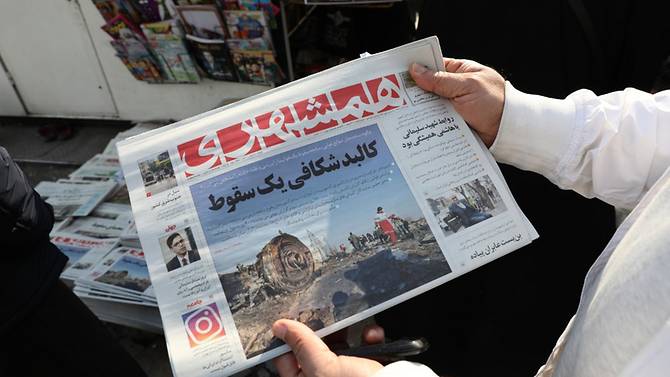




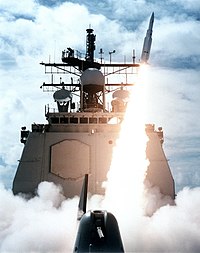
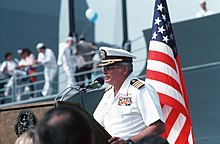
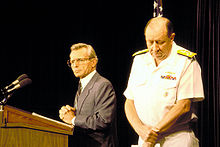
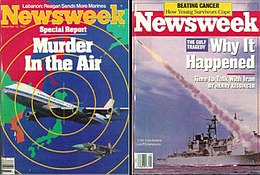




 PHOTO: Mourners attend an outdoor vigil for the victims of a Ukrainian passenger jet which crashed in Iran, in Toronto, Ontario, Canada. (Reuters: Chris Helgren)
PHOTO: Mourners attend an outdoor vigil for the victims of a Ukrainian passenger jet which crashed in Iran, in Toronto, Ontario, Canada. (Reuters: Chris Helgren) PHOTO: Thousands of Boeing 737-800s are used by airlines around the world. (AP: Mohammad Nasiri)
PHOTO: Thousands of Boeing 737-800s are used by airlines around the world. (AP: Mohammad Nasiri)

 wtf!
wtf!